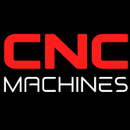How Robots Will Impact American Manufacturing Over the Next 20 Years

How Robots Will Impact American Manufacturing Over the Next 20 Years
Over the next two decades, robotics is set to revolutionize American manufacturing. What began as simple, repetitive automation is quickly evolving into a world of collaborative robots (cobots), autonomous systems, and AI-powered smart factories. With advances in robotics, artificial intelligence, and machine learning, U.S. manufacturers are poised to increase efficiency, reduce dependency on offshore labor, and build more resilient domestic supply chains.
Here’s what to expect—and prepare for—as robots reshape the American manufacturing landscape through 2045.
1. Rise of Collaborative Robots (Cobots)
What’s Changing:
Unlike traditional industrial robots that work in isolated environments, collaborative robots are designed to operate safely alongside humans.
Impact:
- Boosts workforce productivity without replacing human jobs entirely
- Enables smaller shops to automate without expensive fencing or infrastructure
- Ideal for high-mix, low-volume production in CNC, assembly, and packaging
- Reduces fatigue by taking over repetitive or ergonomically difficult tasks
Outlook:
Expect cobots to become commonplace in job shops and mid-sized factories by 2030, especially in industries like metalworking, electronics, and logistics.
2. Reshoring Through Robotic Efficiency
What’s Changing:
Labor costs abroad have traditionally driven U.S. companies to outsource. However, robot-driven efficiency is reversing this trend.
Impact:
- Reshoring becomes viable as robots reduce reliance on low-cost overseas labor
- Lower shipping costs and faster lead times by keeping production local
- Supports the Buy American movement and national security priorities in critical sectors
Outlook:
Robots will be central to reshoring millions of manufacturing jobs over the next 20 years—especially in automotive, defense, semiconductors, and energy components.
3. Fully Autonomous Manufacturing Facilities
What’s Changing:
AI and robotics are converging to build lights-out factories—facilities that run 24/7 with minimal human intervention.
Impact:
- Real-time adjustments based on sensor feedback
- Automated quality inspection, tool changes, material handling, and maintenance
- Predictive analytics reduce downtime and scrap
- Drastically lowers unit cost per part in high-volume environments
Outlook:
By 2045, fully autonomous “smart factories” will dominate sectors like aerospace, consumer electronics, and pharmaceuticals, with U.S.-based facilities competing globally on price and speed.
4. Advanced Robotic Welding, Machining, and Additive Manufacturing
What’s Changing:
Precision robots are taking over tasks once reserved for highly skilled labor—like welding, CNC machining, and even 3D printing of complex metal parts.
Impact:
- More consistent welds and tighter machining tolerances
- Hybrid systems that combine additive and subtractive processes in one robotic cell
- AI adjusts in real time for material changes, part distortion, or environmental variables
Outlook:
Expect rapid growth in multi-process robotic workstations, especially in industries that require both customization and repeatability (e.g., medical devices, defense, aerospace).
5. Workforce Transformation, Not Elimination
What’s Changing:
Robots won’t eliminate the need for workers—but they will redefine manufacturing jobs.
Impact:
- New roles: robot programming, maintenance, system integration
- Increased demand for mechatronics, data science, and automation technicians
- Entry-level jobs may shrink, but higher-paying tech jobs will rise
- Lifelong learning and certification programs will be essential
Outlook:
Over the next 20 years, expect to see a shift from labor-intensive roles to robot-assisted, tech-driven careers—offering safer work environments and stronger wages.
6. Increased Customization and Mass Personalization
What’s Changing:
Robots enable on-demand, small-batch manufacturing at scale, making custom product lines financially viable.
Impact:
- Faster changeovers between products
- Robotic arms programmed via AI/ML to “learn” new products faster
- Personalized products (e.g., medical implants, automotive interiors) become standard
Outlook:
By 2045, American factories will excel at mass customization, leveraging robots to compete not just on price—but on flexibility and personalization.
7. Robotics + AI = Smarter Supply Chains
What’s Changing:
Robots integrated with AI and IoT sensors will manage raw materials, track part inventory, and adjust production flows autonomously.
Impact:
- Just-in-time (JIT) manufacturing becomes smarter and more resilient
- Reduced waste and overproduction
- Real-time visibility into every corner of the production cycle
- Proactive response to demand shifts, supplier issues, or equipment failure
Outlook:
Robots will form the backbone of fully digitized supply chains, giving U.S. manufacturers a strategic edge in forecasting, inventory control, and global fulfillment.
Final Thoughts: Preparing for a Robotic Manufacturing Future
The next 20 years will bring an unprecedented wave of robotic innovation to American manufacturing. From cobots working alongside machinists to fully autonomous production lines, the role of robotics will expand from niche to mission-critical. Businesses that invest in robotics, workforce development, and digital infrastructure today will be better positioned to lead the manufacturing resurgence of tomorrow.
Key Takeaways:
- Start small: Automate one process, then scale
- Upskill your team: Invest in robotics training and certifications
- Think long-term: Build a flexible infrastructure that supports Industry 4.0
- Partner wisely: Work with integrators who understand your shop’s unique needs


